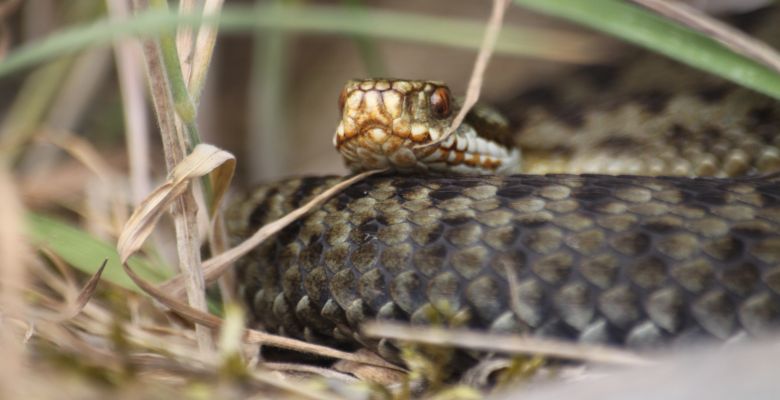
Protection
All six British reptile species are protected under:
- The Wildlife and Countryside Act 1981 (as amended).
The smooth snake and sand lizard have much more restricted geographical ranges than the common British reptiles, and are also protected as European Protected Species under:
- The Conservation of Habitat and Species Regulations 2010.
When do I need to get in touch?
Common reptile species include adder, common lizard, grass snake and slow-worm. These species are present throughout the UK in a range of both urban and rural habitats. Sand lizard and smooth snake are much more restricted; they are typically found in pockets of Southern England and, in the case of sand lizard, very small areas in West Wales and Merseyside. The potential for a project to affect reptiles is usually identified within a Preliminary Ecological Appraisal / Extended Phase 1 Habitat Survey.
As reptiles can be present on a range of sites, it is important to establish whether surveys to identify presence or absence of reptiles should be considered. EcoNorth can advise you on whether reptile surveys are required prior to commencement of your project.
To prevent delays, it is important to get in touch as early as possible, as reptile surveys are highly seasonal.
How can EcoNorth help me?
EcoNorth can advise you on reptile legislation and mitigation measures where applicable. Our Ecologists are experienced in undertaking all types of reptile survey, licensing and mitigation. We apply best practice guidelines, along with our in-depth knowledge of reptilian species and their habitat requirements, and present survey results and recommendations in our detailed professional reports to inform and support your project’s planning application or other consenting process.
Reptile surveys are undertaken between April and September but optimal months are April, May and September. Seven separate site visits are required to determine the presence/absence of reptile species. Should a population of reptiles be recorded within these seven visits, up to 20 visits may be required to undertake a ‘population class estimate’ of reptilian species present across the site.


